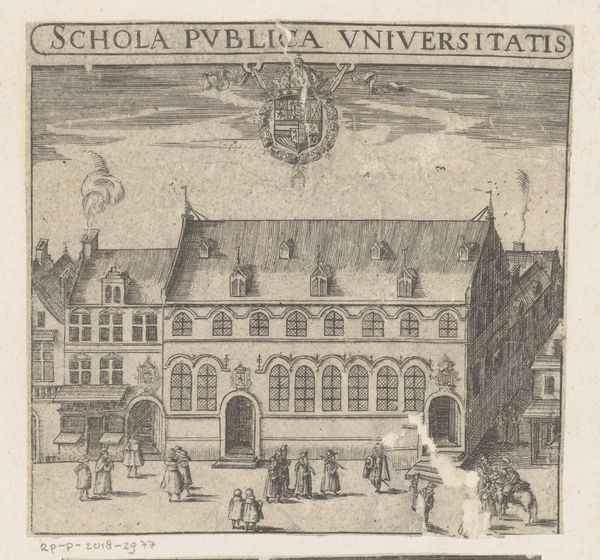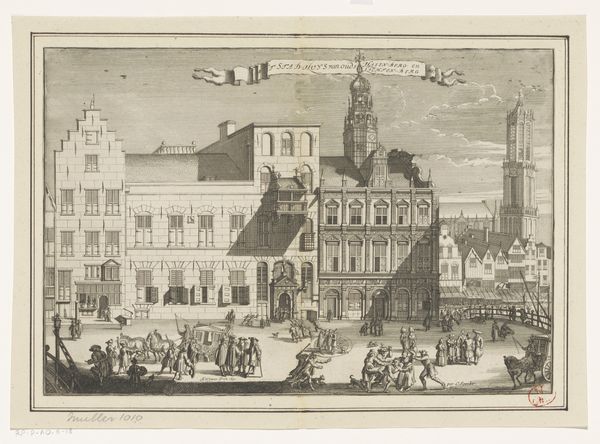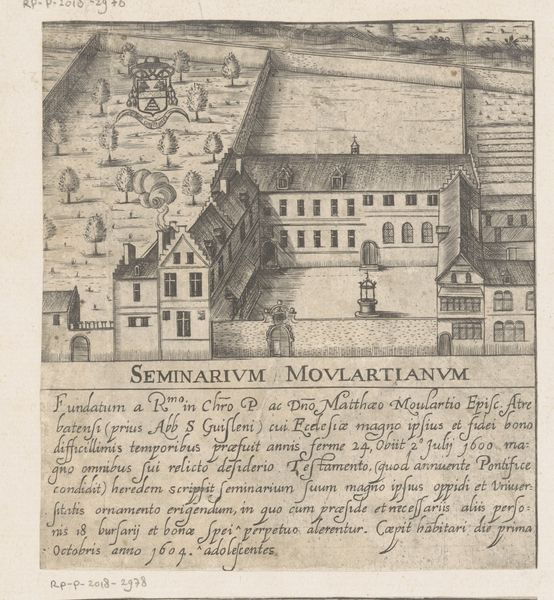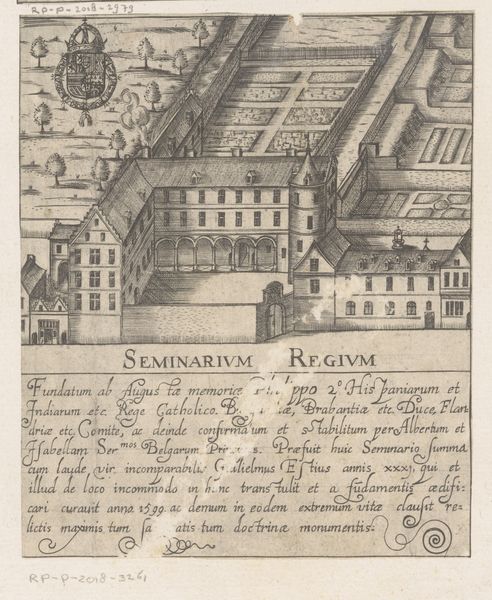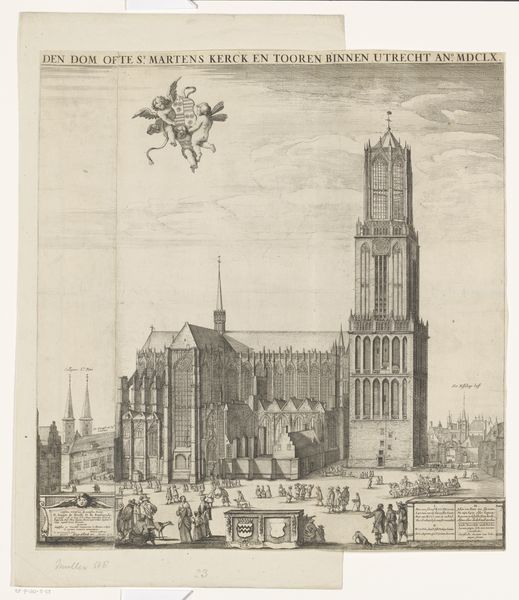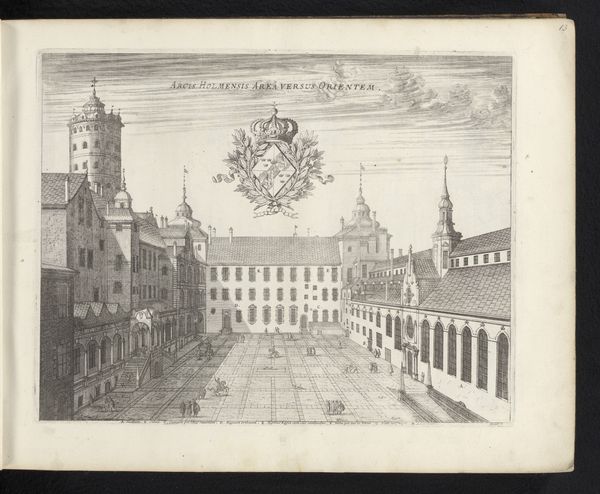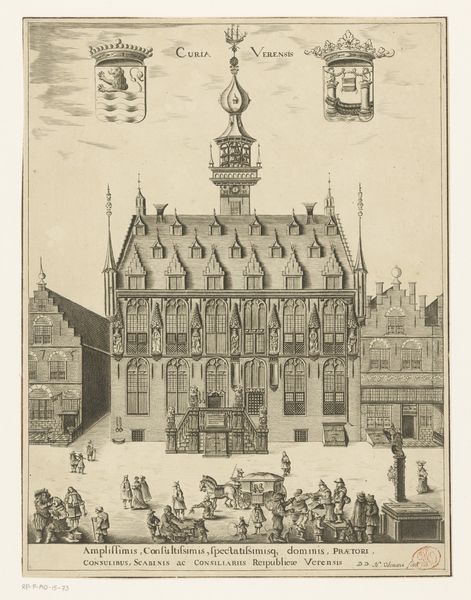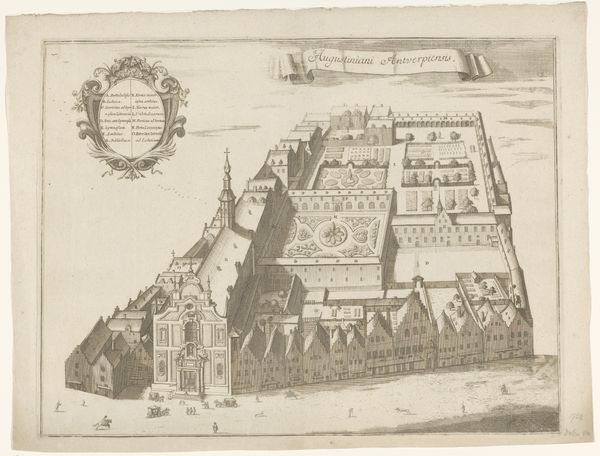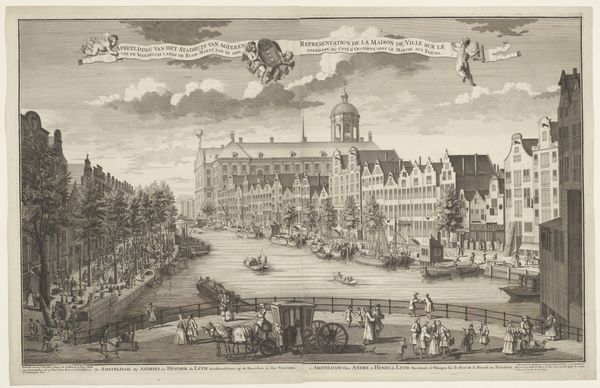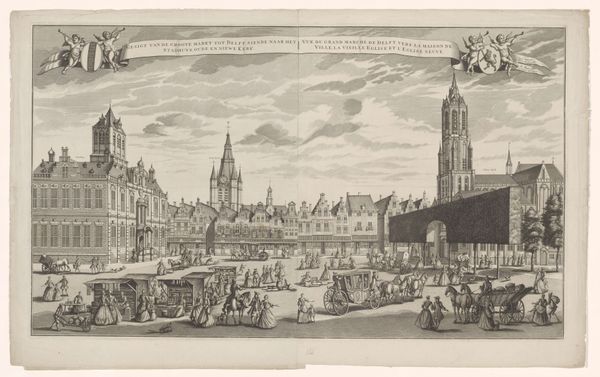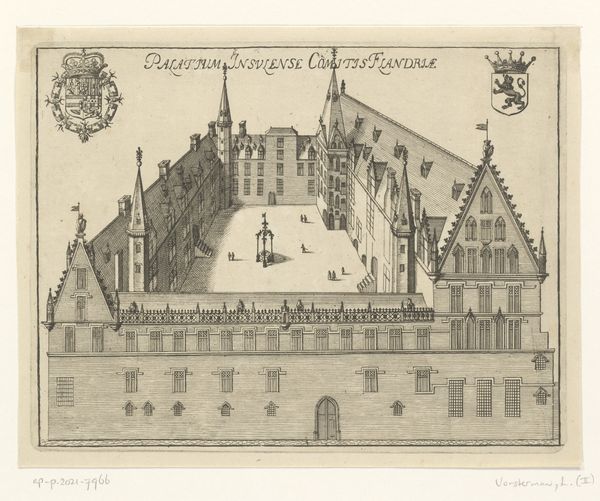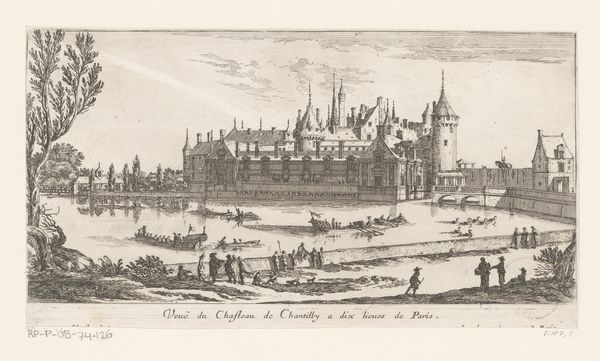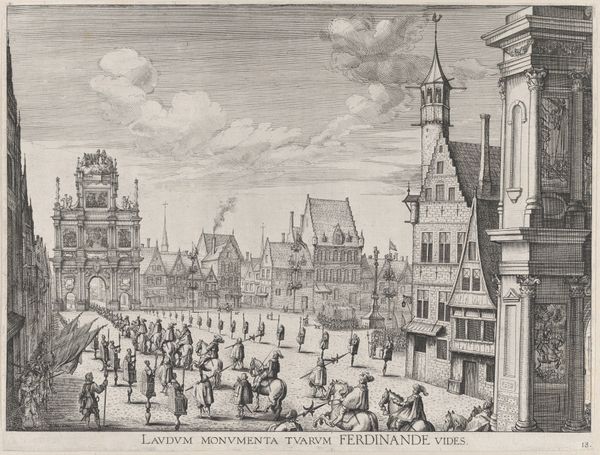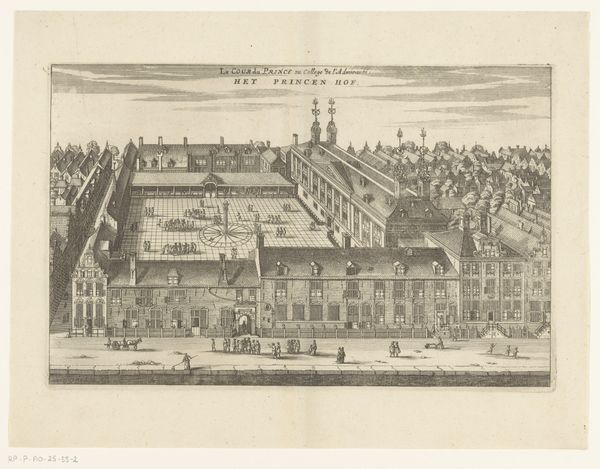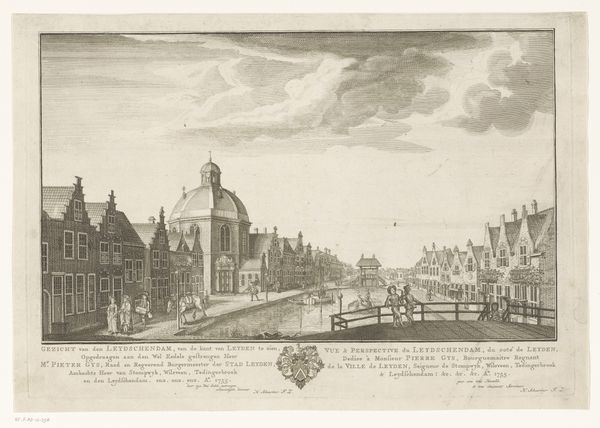
print, engraving
#
aged paper
#
toned paper
#
light pencil work
#
baroque
#
dutch-golden-age
# print
#
old engraving style
#
sketch book
#
personal sketchbook
#
journal
#
sketchbook drawing
#
cityscape
#
storyboard and sketchbook work
#
engraving
#
columned text
Dimensions: height 133 mm, width 140 mm
Copyright: Rijks Museum: Open Domain
Editor: This is "Huis van de senatoren," or "House of Senators," an engraving made sometime between 1605 and 1680 by Filippo Ferrari. I'm struck by how detailed it is, even though it’s a print. All the different architectural styles crammed together. What stories do you think it tells about the power structures of the time? Curator: It’s fascinating how Ferrari's engraving encapsulates the intertwining of political power and urban development. Consider the placement of "Domvs Senatoria Civitatis" at the top, emphasizing the dominance of the senatorial class. How does this architectural portrayal of the House of Senators, standing amidst a complex urban landscape, reflect on the city's social hierarchy? Editor: So it's not just about the building itself, but also about what the building represents? The senate's authority and its place in the city. Curator: Exactly. This cityscape isn't simply a backdrop; it’s a visual argument about power, access, and control. Notice the vantage point; it positions the viewer to look *up* at the senate, reinforcing a sense of deference and established order. We must also ask: whose stories are not being told? What are the experiences of those living in the shadows of these grand buildings? Editor: That's an important question. I see the artist has chosen to frame things in a certain way, visually establishing a dominant narrative and, as you said, silencing others. The houses kind of blend together but the House of Senators is distinct. Curator: Yes, the visual hierarchy cannot be ignored. Consider also the implications of the 'aged paper' and 'old engraving style.' They’re not just aesthetic qualities but convey a sense of enduring tradition and legitimized power structures passed through generations, something critical to unpacking colonial and capitalist projects. The medium itself speaks to the era’s cultural values. Editor: I hadn’t thought about it that way. So it's not just a picture of a building. It’s a carefully constructed message. Curator: Precisely. The artwork pushes us to analyze beyond the surface and to unpack the complex historical narratives it embodies and omits. Editor: Thanks, I'll never see a cityscape the same way again.
Comments
No comments
Be the first to comment and join the conversation on the ultimate creative platform.
